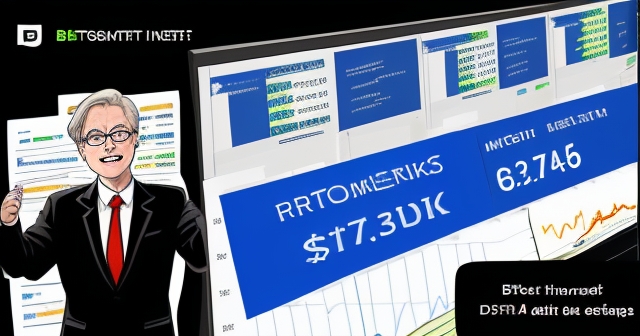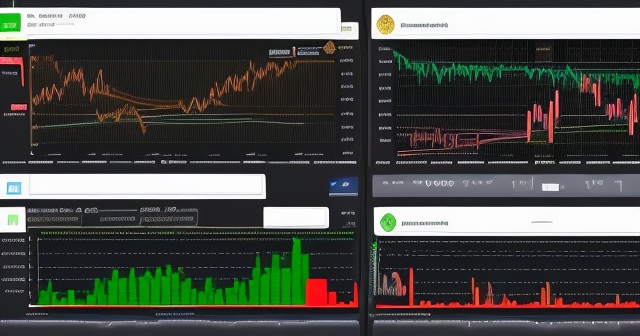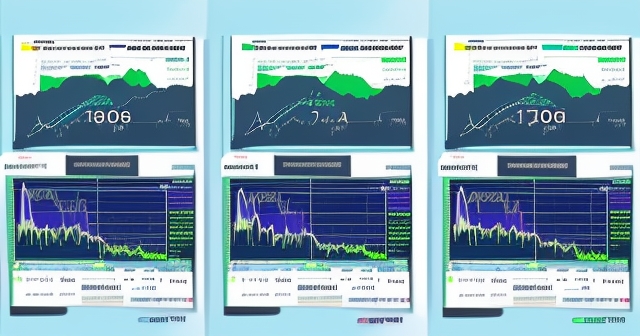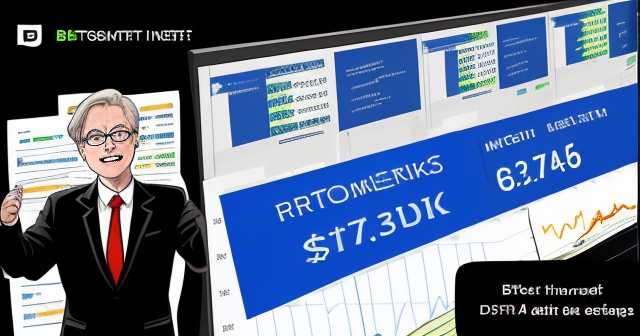“`html
Navigating the MicroStrategy (MSTR) Stock Split: Accessibility, Bitcoin, and What It Means For You
Welcome back, fellow investors. Today, we’re diving deep into a significant event that recently occurred with a rather unique company: MicroStrategy (MSTR). You’ve likely heard about stock splits, but when a company like MicroStrategy, known primarily for its massive Bitcoin holdings, announces a 10-for-1 forward stock split, it warrants careful examination. This isn’t just a cosmetic change; it reflects the company’s trajectory, its strategic decisions, and its aims regarding its shareholder base. We want to help you understand the mechanics, the motivation, and the implications of this move.
Think of it like cutting a pizza. Before the split, you had one large slice (a share). After the split, you have ten smaller, identical slices (ten shares). The total amount of pizza you have hasn’t changed, but the pieces are now smaller. This simple analogy helps grasp the core concept, but as we’ll see with MSTR, the context surrounding *why* they split and *what* drives their value adds layers of complexity we need to explore.
So, let’s break down the specifics of this MSTR stock split, look at MicroStrategy’s fascinating evolution, revisit its turbulent history with stock adjustments, and discuss what this all means if you’re considering investing or already hold shares.

Let’s start with the nuts and bolts. A forward stock split is an action taken by a company to increase the number of its outstanding shares by dividing existing shares into multiple shares. In MicroStrategy’s case, the board of directors declared a 10-for-1 forward stock split of its Class A and Class B common stock. This wasn’t done by simply issuing new shares but was structured as a stock dividend.
What does structuring it as a stock dividend mean? For every one share of Class A or Class B common stock you held, you received an additional nine shares of the same class. This brings your total share count to ten shares for every one previously held. Importantly, this action does not require you, the investor, to do anything; the adjustments are handled automatically by the company and your brokerage.
The key dates for this MSTR stock split were as follows:
-
Announcement Date: July 11, 2024. This is when the news broke, and market participants began reacting.
-
Record Date: Close of business on August 1, 2024. To be eligible to receive the additional split shares, you needed to own MicroStrategy stock by the end of trading on this date.
-
Distribution Date: After market close on August 7, 2024. This is when the additional nine shares per old share were distributed to eligible shareholders.
-
Split-Adjusted Trading Begins: Market open on August 8, 2024. Trading in MSTR stock commenced on a split-adjusted basis. If the stock closed at, say, $1450 on August 7th, it would theoretically open around $145 on August 8th (though pre-market and opening price discovery can vary).
| Key Dates |
Description |
| July 11, 2024 |
Announcement of the stock split |
| August 1, 2024 |
Record date for shareholders |
| August 7, 2024 |
Distribution date for additional shares |
| August 8, 2024 |
Trading begins on a split-adjusted basis |
Crucially, while the number of shares you own increases tenfold, the price per share decreases proportionally. If you owned one share worth $1450 before the split, after the split you owned ten shares, each theoretically worth $145 (before any market movements on the split day). Your total investment value remains the same immediately after the split, all else being equal. Your percentage of ownership in the company also remains unchanged. If you owned 0.0001% of the company before, you still own 0.0001% after, just represented by more shares.
This mechanical adjustment is straightforward. The question is, why did MicroStrategy decide to do this now?
Companies conduct forward stock splits primarily for one reason: to lower the nominal share price. At over $1300-$1400 per share before the split, MSTR’s stock was relatively expensive on a per-share basis. While this doesn’t matter for institutional investors or those trading large blocks, it can create a psychological barrier for individual, or retail investors.
MicroStrategy explicitly stated its purpose was to make the stock more accessible to investors and employees. Think about it: if you’re a potential small investor with, say, $500 to invest, buying even one share of MSTR at $1450 was impossible. After the split, at around $145 per share, that same $500 could buy you three shares, with change left over. This dramatically lowers the entry point on a per-share basis.
This is particularly relevant for MicroStrategy, which has cultivated a significant following among retail investors, largely due to its pioneering and aggressive strategy involving Bitcoin. Many of these investors are passionate about Bitcoin and see MSTR as a proxy for investing in the cryptocurrency through a traditional stock market vehicle. Making the stock more attainable for this core group makes strategic sense for the company.
Moreover, a lower share price can make employee stock options or purchase plans more attractive. Employees granted options or the ability to buy shares can acquire more shares for the same cost, potentially increasing their alignment with the company’s performance.
While the rise of fractional shares – the ability to buy less than one whole share through many brokerage platforms – has somewhat diminished the practical necessity of lowering the share price for accessibility, not all platforms offer fractional shares, and the psychological impact of seeing a lower nominal price remains significant for many investors. A lower price *feels* more affordable, even if the underlying value proposition hasn’t changed.
So, the motivation is clear: enhance accessibility, appeal to a broader base of potential investors, and potentially benefit employees. But this move also shines a spotlight on what MicroStrategy has become.

To understand MicroStrategy’s valuation and why its share price became so high pre-split, we must look at its dramatic transformation. For decades, MicroStrategy was known as a business-to-business (B2B) enterprise software company, specializing in analytics and business intelligence. It was a respectable, albeit somewhat slow-growing, tech firm.
That all changed starting in 2020. Under the leadership of its co-founder and Executive Chairman, Michael Saylor, MicroStrategy embarked on a bold, unprecedented corporate strategy: accumulating Bitcoin as its primary treasury reserve asset. It declared itself the world’s first Bitcoin development company, focusing not only on acquiring BTC but also on developing software and solutions leveraging the Bitcoin network.
This strategy fundamentally altered the company’s identity and valuation drivers. MicroStrategy’s share price performance became overwhelmingly correlated with the price of Bitcoin. As Bitcoin surged in value, so did MSTR stock, often with amplified volatility due to the company’s leveraged approach to acquiring BTC.
Consider the scale of its Bitcoin holdings. As of early August 2024 (in the context of the split announcement), MicroStrategy had acquired a staggering 252,220 BTC. The total cost basis for this acquisition was around $9.9 billion. With Bitcoin trading significantly above their average purchase price, the market value of these holdings was approximately $15.9 billion. This considerable asset base forms the lion’s share of MicroStrategy’s market capitalization, which stood over $37 billion before the split was effected.
The software business, while still operational and attempting a turnaround with new AI-powered features, has taken a backseat in the market narrative. Historical data shows its sales have struggled, experiencing a 14% decline over the decade ending 2023. While efforts are underway to improve this, the Bitcoin strategy is unequivocally the primary driver of MSTR’s stock performance and high valuation.
| Financing Strategies |
Description |
| Cash Flows |
Generated from software business operations |
| Equity Financing |
Issuing new shares to raise capital for Bitcoin purchases |
| Debt Financing |
Issuing convertible senior notes and fixed-income securities |

How did MicroStrategy acquire such an enormous amount of Bitcoin? It wasn’t simply from accumulated profits of its software business. The company has aggressively utilized various financing methods to fund its Bitcoin purchases. Understanding these methods is crucial for any investor considering MSTR, as they introduce risks not typically found in a standard software company.
MicroStrategy has primarily used three avenues:
-
Cash Flows: Some Bitcoin was acquired using cash generated from its software business operations. This is the least risky method, as it doesn’t involve taking on new obligations.
-
Equity Financing: The company has frequently issued new shares of stock to the public. Selling stock raises capital but increases the number of outstanding shares. This leads to potential dilution – meaning each existing share now represents a smaller percentage of ownership in the company (though the total value of the company hasn’t necessarily decreased). Investors buying these new shares are essentially providing capital for Bitcoin purchases.
-
Debt Financing: MicroStrategy has also issued significant amounts of debt, including convertible senior notes (which can be converted into stock under certain conditions) and fixed-income security offerings. This allows them to borrow money to buy Bitcoin. While potentially boosting returns if Bitcoin‘s price rises significantly above the cost of debt, this introduces leverage. Leverage amplifies both gains and losses. If the price of Bitcoin were to fall drastically, the company would still be obligated to repay its debt, potentially creating financial distress or forcing them to sell Bitcoin at a loss.
The combination of equity and debt financing has allowed MicroStrategy to rapidly scale its Bitcoin holdings far beyond what its software business cash flows could support. However, it means that MSTR’s balance sheet now carries significant debt and has a growing number of outstanding shares due to equity raises.
When analyzing MSTR, investors aren’t just valuing a software company or even just a hoard of Bitcoin. They are valuing a unique entity with a specific strategy for acquiring a volatile asset (BTC), financed through methods that introduce leverage and potential dilution. The high pre-split share price reflected the market’s valuation of this entire complex structure, making the split a logical step to improve access, as we discussed.
For those who have followed MicroStrategy for a long time, this 10-for-1 stock split isn’t the company’s first rodeo when it comes to adjusting its outstanding shares and share price. MSTR has a history marked by extreme volatility and prior stock adjustments, which provide valuable context for its current situation.

MicroStrategy went public in June 1998 at a split-adjusted price of just $6 per share. During the late 1990s dot-com bubble, the stock soared, reaching an incredible peak of $313 per share on March 10, 2000. It was one of the darlings of the internet era.
During this period of rapid ascent, in January 2000, MicroStrategy executed a 2-for-1 forward split. Similar to the recent split, this doubled the number of outstanding shares and theoretically halved the share price, likely aimed at making the stock more accessible during its high-flying period.
However, when the dot-com bubble burst, MSTR’s stock experienced a catastrophic collapse, losing over 99% of its value from its peak. By July 2, 2002, the stock hit an all-time low of $0.45 per share. This rapid, drastic decline created a new problem: falling below the minimum share price required to remain listed on the Nasdaq exchange.
To regain compliance with Nasdaq listing standards and boost its share price, MicroStrategy took the opposite action: a reverse stock split. In July 2002, it performed a 1-for-10 reverse split. This consolidated every ten existing shares into one new share, increasing the share price tenfold and decreasing the number of outstanding shares by the same factor. This allowed the stock to trade above the minimum price requirement and maintain its Nasdaq listing.
| Stock Split History |
Event |
| June 1998 |
Went public at $6 per share |
| January 2000 |
Executed a 2-for-1 forward split |
| July 2002 |
Executed a 1-for-10 reverse split |
Looking at this history – a forward split during a peak, a reverse split after a crash – highlights the extreme volatility MSTR stock has experienced. The recent 10-for-1 forward split, its largest forward split to date, occurs during another period of high valuation driven by a different technological trend (Bitcoin). It’s a reminder that while the current strategy is new, the propensity for large price swings and the use of stock splits to manage the resulting share price extremes isn’t entirely unprecedented for the company.
Despite the fanfare, media coverage, and the lower share price, it is absolutely critical for investors to understand what a stock split fundamentally *does not* change. As we touched on earlier with the pizza analogy, a split is largely cosmetic.

A stock split does not alter the market capitalization of the company. MicroStrategy’s total value in the market is calculated by multiplying its share price by the total number of outstanding shares. Before the split, a hypothetical scenario might have been 10 million outstanding shares at $1450 each, equaling a $14.5 billion market cap. After a 10-for-1 split, you would have 100 million outstanding shares at $145 each – still totaling a $14.5 billion market cap (ignoring any market movements). The size of the company hasn’t changed by the split itself.
Similarly, a split does not change the company’s underlying business fundamentals. It doesn’t affect revenue, profitability, or its core operations (in MSTR’s case, its software development efforts or its Bitcoin acquisition strategy). The intrinsic value of the company, based on its assets, earnings potential, and strategic direction, is not modified by simply dividing the shares into smaller pieces.
Your percentage of ownership remains the same, as does the value of your total holding immediately after the split. If you owned $10,000 worth of MSTR before the split, you own $10,000 worth immediately after, just represented by more shares at a lower individual price.
Financial metrics per share, such as earnings per share (EPS) or book value per share, are also adjusted proportionally. If MSTR earned $100 million in a quarter and had 10 million shares outstanding before the split, EPS would be $10.00. After the 10-for-1 split, with 100 million shares outstanding, the earnings per share would be adjusted to $1.00. The total earnings haven’t changed, just how they are represented on a per-share basis.
So, while the lower share price is the most visible effect and the primary driver of the split’s stated purpose, savvy investors understand that this is merely an accounting adjustment. The focus should always remain on the fundamental value and prospects of the company itself, not the nominal price of a single share.
We’ve discussed how the 10-for-1 stock split aims to improve accessibility by lowering the per-share price. This was a powerful reason for splits historically, especially before the widespread availability of commission-free trading and fractional shares.
In the past, if a stock traded at $1000 per share, buying just one share meant committing $1000 (plus potentially commissions). For many smaller investors, this was prohibitive. A 10-for-1 split would drop the price to $100, making it far more attainable.
However, the trading landscape has evolved dramatically. Most major brokerage platforms now offer commission-free trading, eliminating the per-trade cost that made buying small numbers of shares less efficient. Furthermore, many platforms allow you to buy fractional shares – meaning you can invest a specific dollar amount ($100, $500, etc.) into a stock regardless of its share price and own a fraction of a share. If MSTR was $1450 and you wanted to invest $145, you could simply buy 0.1 of a share on a platform supporting fractional trading.

The advent of fractional shares significantly reduces the practical need for high-priced stocks to split for the sake of accessibility. An investor can allocate their desired dollar amount to any stock, whether it’s $100 or $1000 per share, and own their proportional piece.
Does this mean stock splits are now pointless? Not entirely. As noted, not all platforms offer fractional shares, particularly outside the US or for all asset types. The psychological effect of a lower nominal share price can still attract investor interest. And, some studies suggest that companies announcing forward stock splits have historically outperformed the S&P 500 in the 12 months following the announcement, possibly due to the perceived positive signal or increased attention they receive.
In MicroStrategy’s specific case, given its large retail following, the split likely *does* serve the stated purpose of making the stock more accessible to its target audience, even in the age of fractional shares. It removes a potential friction point for investors who may not use platforms offering fractional ownership or who simply prefer the psychological feel of owning whole shares.
Now that we’ve dissected the MSTR stock split, let’s pivot to what truly drives the company’s value and the significant risks you should be aware of. As we’ve established, MicroStrategy’s performance is inextricably linked to Bitcoin.
The primary driver of MSTR’s market capitalization and share price is the value of its considerable Bitcoin treasury reserve asset. This means that MSTR stock largely acts as a leveraged proxy for investing in Bitcoin. When Bitcoin‘s price rises, MSTR typically rises, often more dramatically due to the leverage from its debt financing. Conversely, when Bitcoin‘s price falls, MSTR typically falls, potentially more sharply.
This ties MSTR’s fate to the volatile world of cryptocurrency, which in turn is influenced by numerous factors, including:
-
Macroeconomic Conditions: Global inflation, interest rates set by central banks, and broader economic sentiment significantly impact investor appetite for risk assets like Bitcoin.
-
Regulatory Environment: Government regulations regarding cryptocurrencies, both positive (like ETF approvals) and negative (like bans or strict rules), can drastically affect Bitcoin‘s price.
-
Market Sentiment and Adoption: News about institutional adoption, technological developments (like the Bitcoin halving), or major market events can cause rapid price swings.
The leverage employed by MicroStrategy to acquire Bitcoin introduces substantial risk. If Bitcoin were to experience a prolonged and severe downturn, the company could face challenges servicing its debt obligations. While they hold significant Bitcoin assets, a forced sale at a loss to meet debt payments is a potential, albeit perhaps unlikely in the short term, risk.
Furthermore, the ongoing use of equity financing means potential dilution for existing shareholders. While the capital raised is used to buy more Bitcoin (increasing the asset base), each share represents a slightly smaller piece of the pie after an equity offering.
What about the software business? While it is still operational, generating revenue, and pursuing new growth avenues like AI integration, its financial contribution is currently dwarfed by the value and volatility introduced by the Bitcoin holdings. An investor primarily buying MSTR today is doing so for its Bitcoin exposure, with the software business potentially seen as a secondary, perhaps undervalued, asset or a source of cash flow to support the Bitcoin strategy.
So, you’re an investor looking at MSTR post-10-for-1 stock split. What does this cosmetic change mean for you, practically speaking?
-
For Current Shareholders: You now own ten times the number of shares you did before the split, and the cost basis per share has been adjusted downwards accordingly. Your total investment value, percentage ownership, and claim on the company’s assets (including Bitcoin) remain the same immediately after the split. There’s no action required on your part, and your position in the company is unchanged in substance.
-
For Prospective Investors: The lower nominal share price makes it easier to buy whole shares if you prefer or if your platform doesn’t support fractional shares. Instead of needing roughly $1450 to buy one share, you need only about $145. This might make it psychologically more appealing or practically easier to initiate a smaller position.
It’s crucial *not* to interpret the lower share price as the stock being “cheaper” in terms of valuation. A $145 stock that was previously $1450 after a 10-for-1 split is not inherently cheaper than a $145 stock that has always traded around that price, assuming comparable business fundamentals. Valuation depends on metrics like price-to-earnings, price-to-sales, or in MSTR’s case, its market cap relative to the value of its Bitcoin holdings and software business prospects.
The split might increase trading volume initially due to renewed interest and easier access for smaller trades. This increased liquidity is generally seen as a positive. However, the fundamental investment case for MSTR remains unchanged. It is a play on Bitcoin with added leverage risk and a secondary software business component.
Your decision to invest in MSTR should be based on your view of Bitcoin‘s future price, your assessment of MicroStrategy’s specific strategy (including its financing and leverage), and your tolerance for the high volatility inherent in both the cryptocurrency market and MSTR stock.
Do not let the post-split share price be the primary factor in your decision. It’s simply a different way of slicing the same pizza. Focus on the ingredients: Bitcoin exposure, financing risks, software business health, and macro factors affecting BTC.
MicroStrategy’s 10-for-1 stock split didn’t occur in a vacuum. While MSTR is unique due to its Bitcoin focus, stock splits, particularly forward stock splits by high-priced tech or growth stocks, have been a notable theme in the market in recent years.
We’ve seen splits from giants like Amazon, Google (Alphabet), and Apple in the past. More recently, companies like Nvidia and Broadcom also announced splits in 2024, following strong price appreciation. Chipotle Mexican Grill also completed a significant 50-for-1 split.
This trend suggests that despite the rise of fractional shares and commission-free trading, companies still see value in lowering their nominal share price. Whether it’s to make employee stock programs more effective, attract a broader retail investor base, or simply capitalize on the positive psychological momentum often associated with a split announcement, the practice remains relevant.
However, each split must be analyzed in the context of the specific company. While Nvidia’s split came amid explosive growth in AI demand driving its core business, MicroStrategy’s split is tied almost entirely to the performance and strategy surrounding its acquired Bitcoin treasury reserve asset. The reasons and implications differ significantly.
Understanding the general motivations for splits across the market helps frame MicroStrategy’s decision, but it’s the specifics of MSTR’s business model and balance sheet that provide the true depth of insight.
As we wrap up our discussion on the MicroStrategy 10-for-1 stock split, let’s consolidate the key takeaways to help you navigate this unique investment:
The split was a cosmetic adjustment to the share price and outstanding shares. It does not change MicroStrategy’s market capitalization, intrinsic value, your ownership percentage, or the company’s fundamental business and strategy. The primary stated goal was to enhance accessibility for investors and employees by lowering the nominal price from around $1450 to approximately $145 per share, making it easier to buy whole shares.
MicroStrategy’s value is overwhelmingly driven by its substantial holdings of Bitcoin, acquired through a combination of cash flow, equity financing, and debt financing. This strategy positions MSTR as a leveraged play on Bitcoin, making its stock highly sensitive to BTC price volatility and broader macroeconomic factors.
The company has a history of stock adjustments, including a prior forward split during the dot-com bubble and a reverse split after the subsequent crash, illustrating its past volatility and the use of splits to manage share price extremes and Nasdaq listing standards.
While splits still offer psychological appeal and potentially increase liquidity, the rise of fractional shares has lessened their practical necessity for many investors seeking accessibility.
Investing in MSTR means embracing the volatility and risks associated with its Bitcoin-centric strategy, including market fluctuations, leverage, and potential dilution, far more than analyzing the mechanics of its software business.
Your investment decision should be based on your fundamental analysis of MicroStrategy’s strategy, its balance sheet, the outlook for Bitcoin, and your personal risk tolerance, not on the post-split lower share price.
The MicroStrategy 10-for-1 stock split is complete. It successfully lowered the per-share price, making the stock more accessible on a nominal basis, fulfilling the company’s stated objective. While this is a notable event for shareholders and potential investors interested in simpler share lot purchases, it is, at its core, a logistical adjustment.
For you, the investor, the real work hasn’t changed. The value and performance of your MSTR investment will continue to be dictated by the same powerful forces that influenced it before the split – primarily the price of Bitcoin, the company’s strategy for acquiring and holding BTC, and the financial risks inherent in that strategy. Don’t get caught up solely in the symbolism of the split. Instead, focus on understanding the underlying assets, the strategic decisions driving their acquisition, and the market forces that truly move MSTR stock.
mstr stock splitFAQ
Q:What is a stock split?
A:A stock split is an action taken by a company to increase the number of its outstanding shares by dividing existing shares into multiple shares. This usually adjusts the share price and makes the stock more accessible to investors.
Q:How does a stock split affect my investment?
A:A stock split does not change the total value of your investment or your percentage ownership. For example, if you own 10 shares worth $100 each and the company does a 2-for-1 split, you will own 20 shares worth $50 each, but the total value remains $1000.
Q:Why would a company do a stock split?
A:Companies may conduct a stock split to make shares more affordable for small investors, improve liquidity, and increase trading volume, which can improve stock visibility in the market.
“`







留言